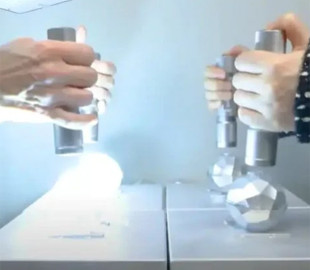
Flexible, transparent, hydrogen, spherical and incredibly efficient solar cells that will change the future of green energy, — in the selection of Focus.
Solar energy is popular all over the world, and today many people install photovoltaic cells to power electrical appliances, or buy gadgets equipped with solar batteries. However, progress does not stand still, and scientists continue to invent innovative devices for generating clean energy. The publication Focus will tell about the most unusual of them.
Flexible and light photo elements from Japan
The Softbank company has developed a solar panel based on silicon with high efficiency — 22.2%, reports pv-magazine.com. The device is interesting because it is quite flexible and light — its weight is 665 g per square meter. m2, that is, one battery weighs 220 g with dimensions of 5.63 x 5.84 cm.
It is worth noting that the photocell is very thin, thanks to which the developers achieved a reduction in weight. All the elements also had to be connected together, and scientists admit that it was quite a difficult task, but still feasible. The thinnest copper wire with a diameter of 250 μm was used, and soldering was done manually.
So filigree work will be improved, scientists say, because they plan to reduce the weight of the solar panel to 500 g per square meter. m. For this, each component of the device will be made even thinner, wiring and lamination methods will be improved.
Panels that absorb an unprecedented amount of light
South Korean researchers have proposed a technology that will allow solar modules to absorb as much as possible sunlight Here they were helped by an alternative material to silicon — perovskite, reports onlinelibrary.wiley.com.
The problem is that solar panels capture light with a wavelength of 850 nm — as a result, only 48% of the solar energy is used. But if the modules could perceive light in the near-infrared spectrum, their efficiency would increase.
The new technology proposes the use of organic photoconductors and perovskite. The battery structure was also improved, which helped to reduce the so-called energy barrier between perovskite and organic photoconductors. All this led to an increase in efficiency by 4%: from 20% to 24%. The solar panel functioned stably for 800 hours, maintaining 80% of the initial efficiency in conditions of high humidity.
If such photovoltaic cells enter the market, they will make a real splash, the inventors are sure, noting that commercializing the technology is quite realistic and easy. Next-generation solar cells will be competitive and attractive to potential buyers.
200% Deposit Bonus up to €3,000 180% First Deposit Bonus up to $20,000Transparent solar panels with an “effect”
Scientists from Michigan State University (USA) have developed transparent solar cells, writes Ecoticias. Such devices can be used to power smartphones, electric cars, and glass buildings with solar energy. Panels of this type function by absorbing ultraviolet and infrared radiation while transmitting visible light. Thanks to this feature, the photocell is practically indistinguishable from glass.
The only downside is the low efficiency. However, they have not given up on trying to increase the efficiency of the devices, as have the developers of the Heliatek GmbH company (Germany), who have created partially transparent photovoltaic cells that not only generate clean energy, but also protect against bright light. This is very convenient in rooms with windows facing south.
Many developers are interested in creating gadgets equipped with solar panels. Today, the market includes street cameras and lanterns with photovoltaic cells, as well as some portable devices.
Hydrogen solar panels SunHydrogen — hydrogen solar panels
The SunHydrogen company (USA) offers unusual solar panels — they are able to convert solar energy into hydrogen. Their efficiency is almost 11%. So far, engineers have tested a prototype with an area of 1 square meter. m. The company claims that this efficiency is the highest among similar devices that can be used where fossil fuels are needed — it is transport, heavy and light industry. In the future, large-scale solar power plants can be created on their basis.
The advantage of such photovoltaic cells is that they make it possible to produce hydrogen without resorting to the use of oil, coal and natural gas, which provoke carbon emissions. Also, hydrogen solar cells are cheaper to operate than plants that provide electrolysis to generate hydrogen.
Sphelar spherical solar cells
The company Kyosemi (Japan) surprised with very unusual devices that can generate energy by collecting sunlight from wherever it falls. The novelties were called Sphelar, writes ECOticias. Solar cells in the form factor of spheres are very efficient and in the future may compete with traditional flat photovoltaic cells.
Sphelar captures sunlight from different angles, as a result, they use direct, reflected and diffused light to generate green energy. The efficiency of spherical solar batteries is kept at the level of 20%, the developers assure. Traditional silicon modules have the same indicators, and even lower.
The spheres are small in size and so far can only provide electricity for mobile equipment, wireless terminals, and various types of small electrical equipment. The models still need improvements and innovations, but the developers are sure that behind such devices — future.
The company aims to commercialize its technology and bring to the market an innovative device for harvesting solar energy to compete with silicon photovoltaic cells.

